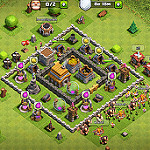 Since the “T” in STEAM stands for technology, it seemed only right to add a post about the code.org video series. Get started on this mini spark to join in on the coding fun and who knows, maybe even begin your career in the computer sciences!
Since the “T” in STEAM stands for technology, it seemed only right to add a post about the code.org video series. Get started on this mini spark to join in on the coding fun and who knows, maybe even begin your career in the computer sciences!
Spark your thinking!
1. Set up your STEAM mini spark recording page: #11:code.org: Video Series
2. While you are anxiously waiting for Code.org to begin, why not dig into information on coding and all things computer? Perhaps you find yourself wondering how the internet works? Or maybe you’ve always dreamed of sitting down with Mark Zuckerberg to learn a few programming tips and tricks. Now you can!
3. At Code.org there are 7 topic and each topic has 7-10 short videos.
4. Here is a link to videos that will get your brain wrapped around those intriguing topics and more!
5. After looking them over, choose one main topic to explore. On your recording sheet, write the that topic and title of the videos you will watch. Set up a section for each of the videos.
6. Record new ideas or something that you enjoyed from each of the videos. Also record any terms that were new to you.
7. Make a visal about the topic you choose and include 8-10 details.
8. Share your STEAM mini spark recording page with your teacher/EY coordinator.
Check out the Code Crusher Badge and the Code.org Video series badge at the EY Website. You can use this project for one of your projects at the code.org video series badge.




 I have 120 minions (btw…minions can fly). Each minion has 50 health. The archer tower does a big damage on the minion. The minion loses 38 health. How much health does the minion have left?
I have 120 minions (btw…minions can fly). Each minion has 50 health. The archer tower does a big damage on the minion. The minion loses 38 health. How much health does the minion have left?
 Did you know various math topics have special days solely dedicated to it? Learn about some of these holidays in this math mini spark.
Did you know various math topics have special days solely dedicated to it? Learn about some of these holidays in this math mini spark. Why would anyone want to start a forest fire on purpose? In this STEAM mini spark you will find out the answer to this question along with many more ideas about this topic.
Why would anyone want to start a forest fire on purpose? In this STEAM mini spark you will find out the answer to this question along with many more ideas about this topic.

